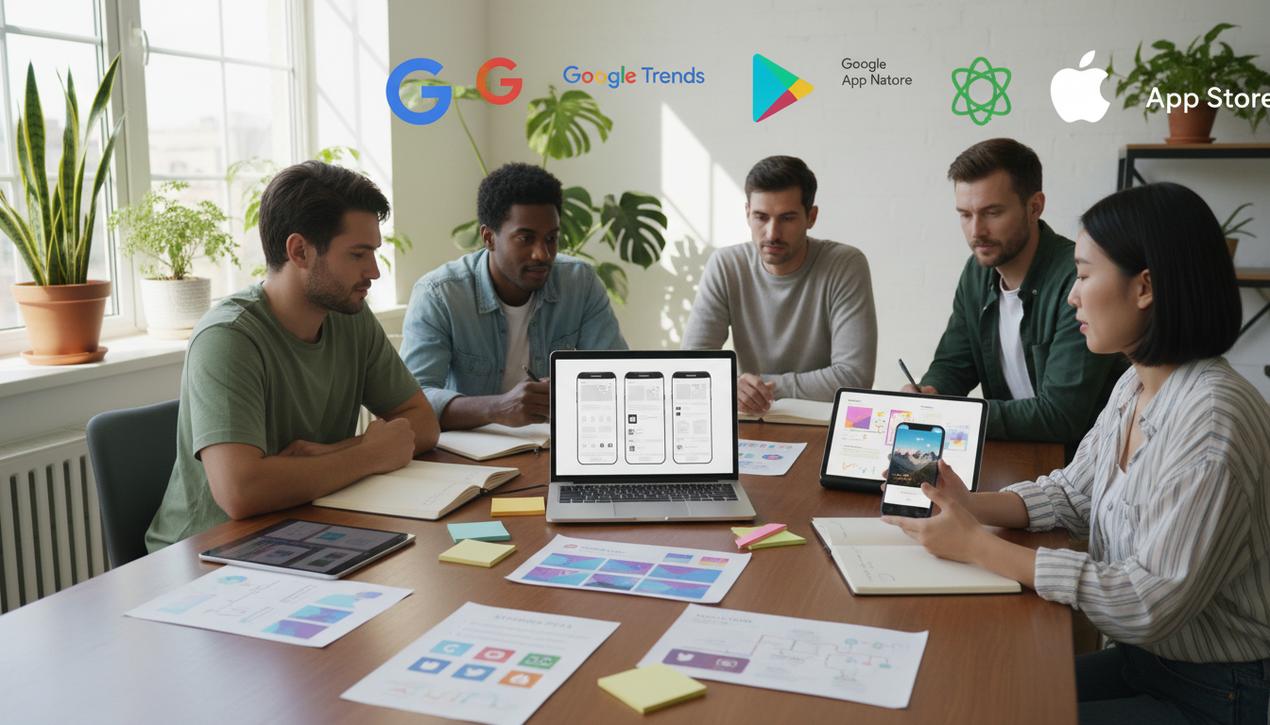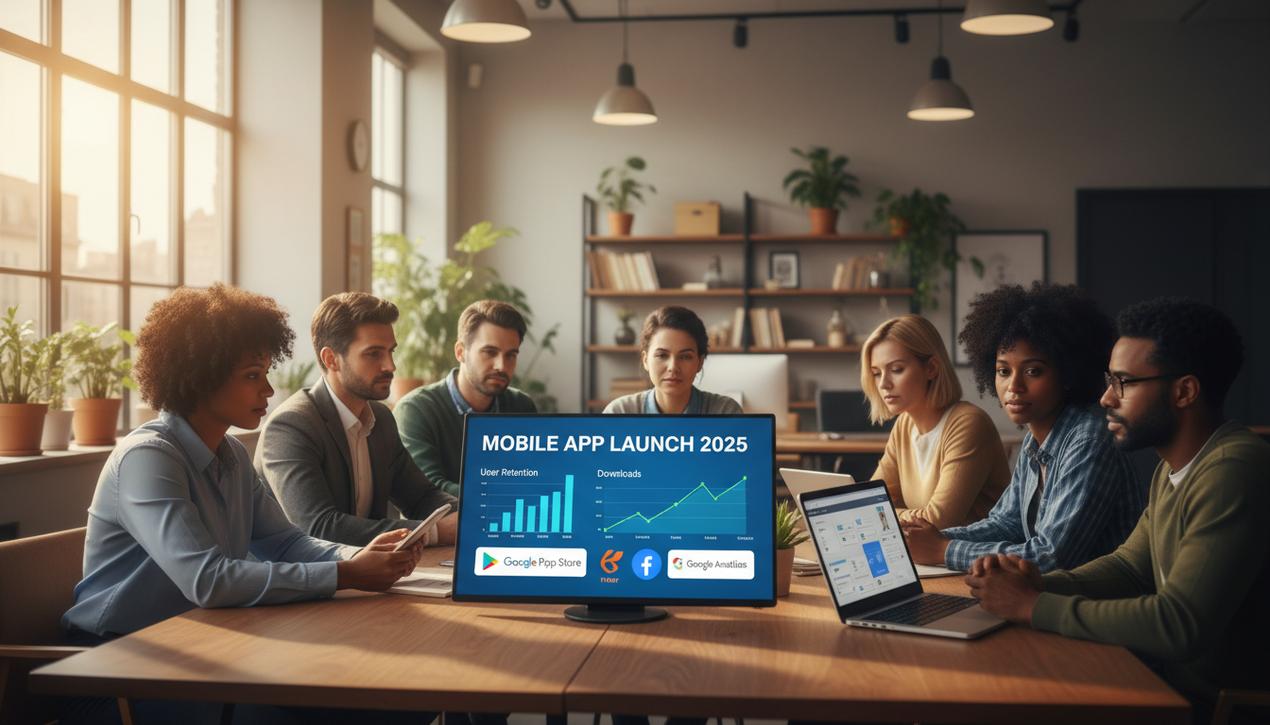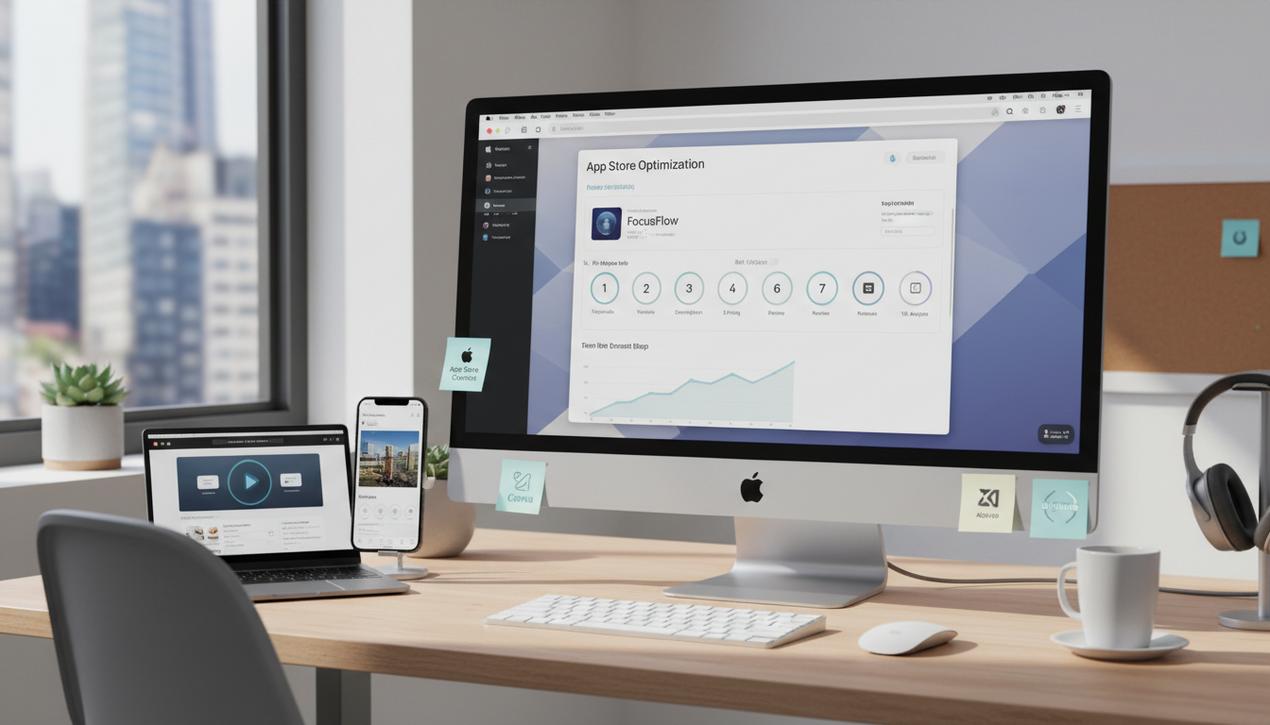How to Create a Mobile App in 2025: The Complete Guide


The mobile app market is a universe of constant expansion, where innovation and competition are reaching unprecedented heights. In 2025, global revenue from mobile apps is projected to soar past $600 billion, a figure that highlights the sector’s immense economic potential. However, with over 5 million apps available across the Google Play Store and Apple’s App Store, simply launching an app guarantees nothing. Statistics show that nearly 25% of apps are used only once after being downloaded. Transforming a brilliant idea into a profitable and beloved application is a complex, methodical process. It’s not just a matter of code; it’s an alchemy of solid strategy, a flawless user experience, and intelligent marketing. This detailed guide breaks down the entire process into 13 key steps, from initial idea validation to post-launch growth, giving you a comprehensive roadmap to successfully navigate your project.
Phase 1: Strategy and Idea Validation
Before a single line of code is written, a robust strategic foundation is essential. Skipping this phase is like constructing a building without a blueprint—an endeavor destined for failure. This is where you determine the relevance, viability, and potential of your project.
Step 1: Validate Your App Idea
Every great application starts with a simple premise: solving a problem. Ensure your concept addresses a real, unmet need. Use tools like Google Trends or keyword planners to assess the search volume surrounding your idea. High demand indicates a potential market. This initial research will also provide a preliminary list of essential keywords for your future App Store Optimization (ASO).
Step 2: Conduct In-Depth Market Research
Once your idea is validated, dive into a competitive analysis. Identify your direct and indirect competitors. Download their apps, analyze their strengths, weaknesses, business models, and carefully read user reviews. These comments are a goldmine for understanding what delights and frustrates your target audience. Next, clearly define your user personas: who are your ideal users? What are their needs and habits? This deep understanding will allow you to define your unique value proposition (UVP): what makes your app better and different.
Step 3: Choose the Right Monetization Model
How will your app generate revenue? This decision must be made early on as it directly impacts the design and functionality. Exploring the different ways to make money with an app is a critical step. The leading models in 2025 include:
- Freemium: The app is free, but advanced features are behind a paywall.
- Subscription: Users pay a recurring fee (monthly or annually) to access the service. This is the dominant model for content-driven apps.
- In-App Purchases: Selling virtual goods or one-time features within the app.
- Advertising: Generating revenue by displaying ads to users.
- Paid: The user pays a one-time fee to download the application.
Phase 2: Design and User Experience (UX/UI)
With a clear strategy in place, it’s time to shape your application. This phase is critical because it defines how users will interact with your product. A successful design isn’t just aesthetic; it is, above all, functional and intuitive.
Step 4: Draft a Detailed Project Brief
The project brief, or specifications document, is the central reference for your project. It must detail all functionalities, technical constraints, goals, and the target audience. The more precise it is, the easier it will be to communicate with developers and limit misunderstandings. List every screen, every button, and every expected interaction. This is the roadmap that, as part of successful project management, will guide the entire development team.
Step 5: Define Your Branding and Visual Identity
Your brand is the soul of your application. It must shine through in every visual element. Define a logo, color palette, typography, and communication tone that reflect your project’s values and speak to your target audience. A strong, consistent visual identity builds a sense of belonging and trust—key elements for user retention.
Step 6: Design the UX/UI and Create Prototypes
UX (User Experience) focuses on usability and logical navigation, while UI (User Interface) relates to the visual and interactive aspects. Start by creating wireframes (low-fidelity, black-and-white layouts) to structure the information architecture. Then, move on to mockups (high-fidelity designs) that incorporate the visual identity. Finally, build an interactive prototype that simulates the app’s functionality. This tool is essential for testing usability and gathering early feedback before development begins.
Step 7: Define the Scope of Your MVP (Minimum Viable Product)
Don’t try to build your dream app in the first version. Focus on an MVP: a version of your app that includes only the essential features needed to solve your user’s core problem. The goal is to launch a functional product quickly to test the market, gather real-world data, and iterate based on feedback, all while controlling initial development costs.
Phase 3: Development and Technical Testing
This is the phase where your project comes to life. The choice of technology and a rigorous testing process are the pillars of your app’s technical success.
Step 8: Choose the Right Technology Stack
The technology choice depends on your budget, timeline, and required features. Three main options are available:
- Native: Developing a specific app for each platform (iOS and Android) using their respective languages (Swift/Objective-C for iOS, Kotlin/Java for Android). This approach offers the best performance and full access to device features.
- Cross-Platform: Using frameworks like React Native, Flutter, or .NET MAUI to write a single codebase that works on both platforms. It reduces costs and timelines but may have some performance limitations.
- Progressive Web App (PWA): A web application that behaves like a native app. Accessible via a browser, it doesn’t require installation from an app store.
Step 9: The Application Development Stage
This is often the longest and most costly phase. It’s typically divided into “sprints” using an Agile methodology. The development team codes the back-end (servers, databases, APIs) and the front-end (the user-facing interface). Regular communication between the project owner and developers is crucial to ensure the final product aligns with the expectations set in the project brief.
Step 10: Integrate Analytics and Conduct Testing
Before launch, integrate analytics tools (like Google Analytics for Firebase or Mixpanel) to track user behavior. Then, conduct rigorous testing to eliminate bugs. Alpha testing is done internally, while beta testing involves a group of external users who represent your target audience. Their feedback is invaluable for polishing the app before its public release.
Phase 4: Launch and Post-Launch Growth
The development is complete, but the work is just beginning. A successful launch and a well-thought-out growth strategy are what will turn your application into a lasting success.
Step 11: Prepare the Launch and Marketing Strategy
Marketing your app should start long before it’s available. Create a landing page to showcase the app and collect email addresses. Be active on the social media channels where your target audience congregates. Prepare a press kit and reach out to influencers and industry media. The goal is to build anticipation and have an initial user base ready to download on day one.
Step 12: Deploy the App to the Stores
Submitting an app to the App Store and Google Play Store is a technical process with strict guidelines. Work meticulously on your App Store Optimization (ASO): title, description, keywords, icon, and screenshots. These elements are your storefront and directly impact your visibility and conversion rates. Understanding how to publish on the App Store is key.
Step 13: Gather Feedback and Iterate
Once your app is live, actively listen to your users. Analyze the data you collect, read every comment, and respond to reviews. This feedback is your best source of information for planning future updates. The success of an app lies in its ability to continuously evolve and improve based on the needs of its community.
Creating a mobile app is a demanding but exciting entrepreneurial journey. Success doesn’t hinge on a single step but on the rigorous execution of a complete process, from initial strategy to continuous improvement. By following these steps, you can structure your approach, minimize risks, and maximize your chances of turning your vision into an application that finds its place in the daily lives of thousands of users.




